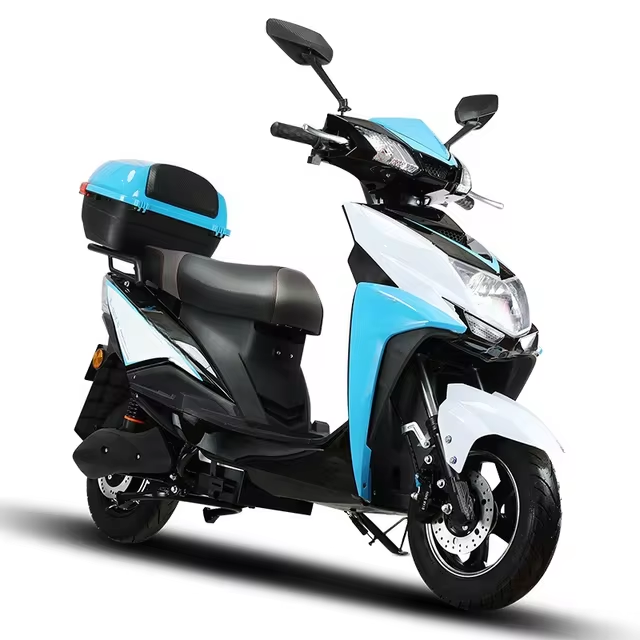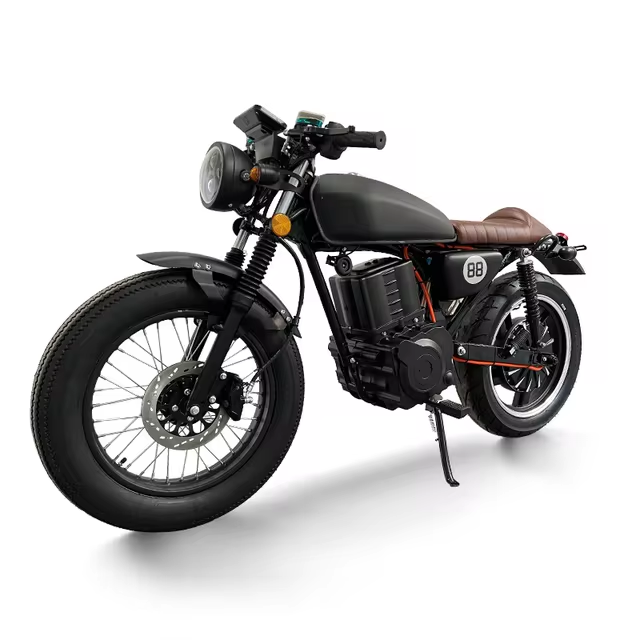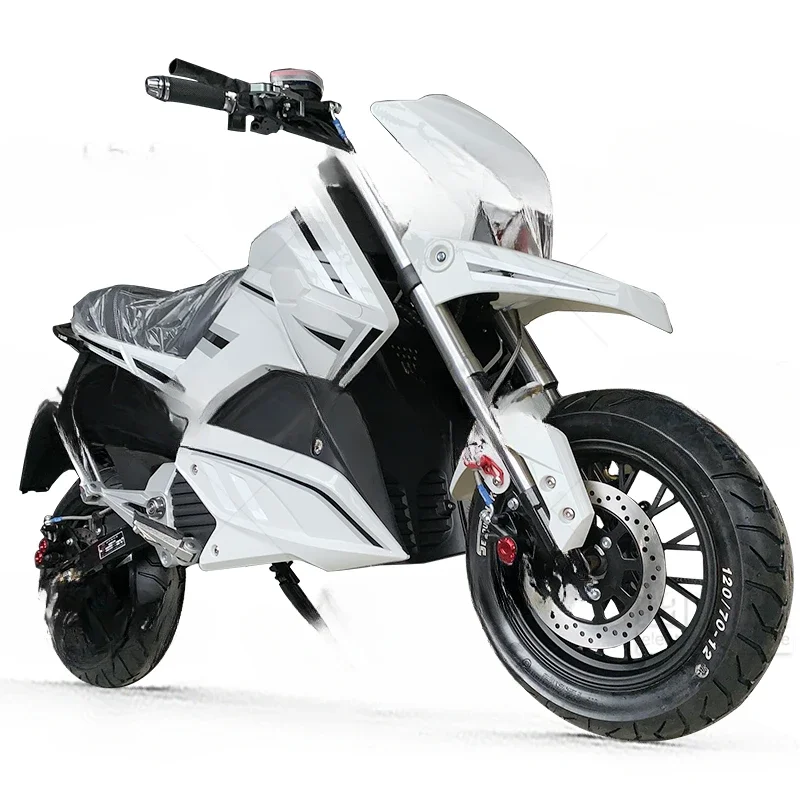Overview of Electric Motorcycle Crash Trends
As electric motorcycles continue to gain traction in the market, so does the attention paid to the safety risks associated with them. Understanding the trends in electric motorcycle crashes is essential for identifying necessary safety measures and promoting responsible riding behaviors.

Recent Statistics on Electric Motorcycle Crashes
Recent studies indicate that injuries from electric motorcycles, like e-bikes, are on an incline. In the United States, reported cases of electric motorcycle accidents have shown a considerable yearly increase with injuries ranging from minor scrapes to severe trauma. Predictably, as sales and usage soar, the frequency of crashes involving these vehicles rises in tandem.
The Surge in Electric Motorcycle Popularity and Its Impacts
Electric motorcycles are becoming popular due to their appeal as an eco-friendly alternative to traditional fuel-powered bikes. However, this surge in popularity comes with its challenges. More electric motorcycles on the road mean a higher potential for accidents, especially in urban areas where traffic is dense and road sharing is common. As cities continue to adapt to this growing trend, the emphasis on creating safer environments for both riders and pedestrians becomes more significant.
Factors Contributing to Electric Motorcycle Crashes
Understanding the factors that lead to electric motorcycle crashes is crucial for improving safety measures.
The Role of Speed and Communal Use
Speed plays a significant role in electric motorcycle accidents. E-bikes and electric motorcycles can reach high speeds quickly. This makes it hard for riders to react in time during emergencies. Moreover, the communal use of such bikes increases the risk. Shared electric bikes are often used by different people. Not all riders have the same experience or skill level. This variance can lead to accidents when less experienced riders use high-speed modes.
Influence of Alcohol and Lack of Helmet Use
Alcohol impairs judgment and reaction times, making it a major risk factor in electric motorcycle crashes. Riders under the influence are less likely to navigate safely. Additionally, the lack of helmet use significantly increases the risk of severe injury. Despite the known benefits of helmets in reducing head injuries, some riders choose not to wear them. This choice often leads to more severe consequences in the event of an accident.
Comparing Electric and Conventional Motorcycle Injuries
When looking at the data, it is clear that electric motorcycle crashes and conventional motorcycle crashes often differ in the types and severity of injuries incurred.
Differences in Injury Types and Severity
Electric motorcycle crashes tend to result in certain types of injuries more often than their conventional counterparts. E-bikers may face higher risks of particular injuries due to factors like the bike’s speed and weight. Studies show that e-bikers are more likely to sustain injuries like fractures and head trauma. In contrast, conventional bikers often suffer from road rash and lower body injuries. The electric motorcycle crashes often involve high speeds leading to severe impacts.
Age and Behavior of Riders Involved in Crashes
Riders involved in electric motorcycle crashes tend to display different age and behavior patterns compared to those in conventional bike accidents. For instance, electric motorcycle riders are often older and engage in riskier behaviors, such as not wearing a helmet or riding under the influence. The median age for those injured on e-bikes is around 39, whereas for traditional bikes, it is about 30. This difference may be due to the appeal of electric motorcycles to a more mature audience seeking alternative transportation methods. Poor decisions about safety gear or riding practices contribute significantly to the occurrence and severity of crashes.
 Legal and Safety Implications
Legal and Safety Implications
As electric motorcycle crashes rise, the need for updated traffic laws and better safety policies becomes clear. To respond to the increase in electric motorcycle crashes, changes in traffic laws and policies are critical. These regulations aim to ensure rider safety and adapt to the emerging risks and challenges. Lawmakers must review existing rules and consider new measures specific to electric motorcycles. Key areas for action include helmet mandates, speed limits, and rider education programs.
Changes in Traffic Laws and Policies
Road safety laws may need to evolve to manage the risks electric motorcycles present. Current laws designed for traditional bikes may not cover the speeds and capabilities of electric bikes. Policymakers are pushing to create helmet requirements for all e-bike riders. They are also looking at enforcing lower speed limits for electric motorcycles in city areas. New policies could include stricter penalties for riding under the influence or without proper safety gear.
Urban Planning and Infrastructure Needs
Urban areas need infrastructure that supports the safe use of electric motorcycles. This includes dedicated bike lanes that can handle higher speeds of e-bikes. Cities are exploring smart traffic systems to reduce collision risks. More bike racks and safe parking spots are also on the agenda. Planners must ensure charging stations do not create obstacles on sidewalks. This careful planning will help prevent accidents and provide a safer environment for everyone.
Recommendations for Safer Electric Motorcycle Riding
As electric motorcycle crashes become more prevalent, it’s crucial to address ways to enhance rider safety effectively.
Educational Campaigns for Riders
Increased awareness and knowledge are essential in curbing electric motorcycle crashes. Educational campaigns should focus on the risks of speeding and the dangers of communal usage by inexperienced riders. Teaching the importance of helmet usage and the risks of riding under the influence can significantly reduce injury severity and crash occurrence.
Urgent Need for Enhanced Safety Measures
Beyond education, structural changes are necessary. Implementing stricter laws and regulations concerning electric motorcycle riding can lead to safer practices. Cities need to adapt quickly, integrating smart traffic systems and ensuring safer urban infrastructure for riders. This includes more robust enforcement of existing traffic laws that encourage responsible riding behaviors and discourage risky actions like speeding and not wearing helmets.
Aftermath of Electric Motorcycle Accidents
The consequences of electric motorcycle crashes extend beyond the immediate impact of the incident. The aftermath can be profound, affecting victims, families, communities, and the broader public perception of electric motorcycle safety.
Case Example: Elgin to Lossiemouth Road Incident
A tragic event unfolded on the A941, Elgin to Lossiemouth road, where two teenagers lost their lives. The accident not only caused immediate grief but sparked a wider investigation into electric motorcycle crashes. This case highlighted the potential risks associated with electric motorcycles, especially when combined with factors such as speed, inexperience, or lack of safety gear. It raised questions about the adequacy of current safety measures and regulations for electric motorcycles.
Impact on Communities and Families
In the wake of electric motorcycle accidents, the ripple effects on communities and families can be immense. Crashes can shatter the sense of safety within a community, prompting calls for action to prevent future tragedies. For families, the loss or injury of loved ones can be devastating. It often leads to a search for answers and justice, as well as adjustments to new realities without their family member. Events like the Elgin to Lossiemouth road incident illustrate the urgent need for improved safety practices and awareness of the risks associated with riding electric motorcycles.
 Future Perspectives
Future Perspectives
As we focus on the aftermath and seek to improve safety on our roads, we also need to consider the future of electric motorcycles. The recent rise in electric motorcycle crashes requires a balanced discussion on both potential health benefits and inherent risks. There is also a need to anticipate developments in safety that can help protect riders and pedestrians alike.
Potential Health Benefits versus Risks of Electric Motorcycles
Electric motorcycles offer significant health and environmental benefits. They encourage more physical activity, leading to improved cardiovascular health and reduced obesity. With zero emissions, they also contribute to cleaner air and lower pollution levels. However, these benefits must be weighed against the increased risks of accidents without proper safety measures. Riders must understand the importance of responsible riding practices and the need for protective gear to mitigate these risks.
Anticipated Developments in Electric Motorcycle Safety
In response to the growing number of electric motorcycle crashes, there are several anticipated safety developments:
- Enhanced Rider Training: Programs focusing on the safe operation of electric motorcycles will likely become more widespread.
- Improved Technology: Electric motorcycles may be equipped with advanced safety features, such as anti-lock braking systems and stability control.
- Stricter Regulations: Governments may introduce tougher laws for riding electric motorcycles, including mandatory helmets and speed limitations.
- Better Infrastructure: Cities may build more bike lanes and integrate traffic systems designed for the increasing presence of electric motorcycles.
Together, these health benefits and safety improvements hold the potential to create a future where electric motorcycles can be enjoyed with minimal risk to riders and the public.
